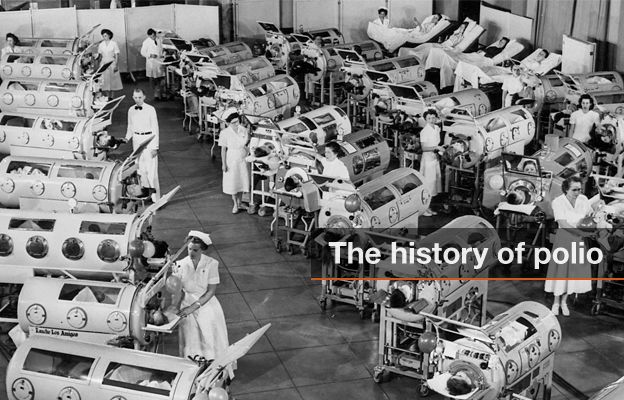History of polio
- Published

Poliomyelitis has existed as long as human society, but became a major public health issue in late Victorian times with major epidemics in Europe and the United States. The disease, which causes spinal and respiratory paralysis, can kill and remains incurable but vaccines have assisted in its almost total eradication today.
Image source, Getty Images
This Egyptian stele (an upright stone carving) dating from 1403-1365 BC shows a priest with a walking stick and foot, deformities characteristic of polio. The disease was given its first clinical description in 1789 by the British physician Michael Underwood, and recognised as a condition by Jakob Heine in 1840. The first modern epidemics were fuelled by the growth of cities after the industrial revolution.
Image source, Other
In 1916, New York experienced the first large epidemic, with more than 9,000 cases and 2,343 deaths. The 1916 toll nationwide was 27,000 cases and 6,000 deaths. Children were particularly affected; the image shows child patients suffering from eye paralysis. Major outbreaks became more frequent during the century: in 1952, the US saw a record 57,628 cases.
Image source, Getty Images
In 1928, Philip Drinker and Louie Shaw developed the "iron lung" to save the lives of those left paralysed by polio and unable to breathe. Most patients would spend around two weeks in the device, but those left permanently paralysed faced a lifetime of confinement. By 1939, around 1,000 were in use in the US. Today, the iron lung is all but gone, made redundant by vaccinations and modern mechanical ventilators.
Image source, Getty Images
A major breakthrough came in 1952 when Dr Jonas Salk (L) began to develop the first effective vaccine against polio. Mass public vaccination programmes followed and had an immediate effect; in the US alone cases fell from 35,000 in 1953 to 5,300 in 1957. In 1961, Albert Sabin (R) pioneered the more easily administered oral polio vaccine (OPV).
Image source, Getty Images
Despite the availability of vaccines polio remained a threat, with 707 acute cases and 79 deaths in the UK as late as 1961. In 1962, Britain switched to Sabin's OPV vaccine, in line with most countries in the developed world. There have been no domestically acquired cases of the disease in the UK since 1982.
By 1988, polio had disappeared from the US, UK, Australia and much of Europe but remained prevalent in more than 125 countries. The same year, the World Health Assembly adopted a resolution to eradicate the disease completely by the year 2000.
Image source, bbc
The WHO Americas region was certified polio free in 1994, with the last wild case recorded in the Western Pacific region (which includes China) in 1997. A further landmark came in 2002, when the WHO certified the European region polio-free.
In 2012, Polio remained officially endemic in four countries - Afghanistan, Nigeria, Pakistan and India, which was on the verge of being removed from the list having not had a case since January 2011. Despite so much progress, polio remained a risk with virus from Pakistan re-infecting China in 2011, which had been polio free for more than a decade.
China returned to its polio-free status, with no recorded incidents after 2011
In 2015, polio remains endemic in only two countries - Pakistan and Afghanistan. No new cases have been reported in Africa for the past year.